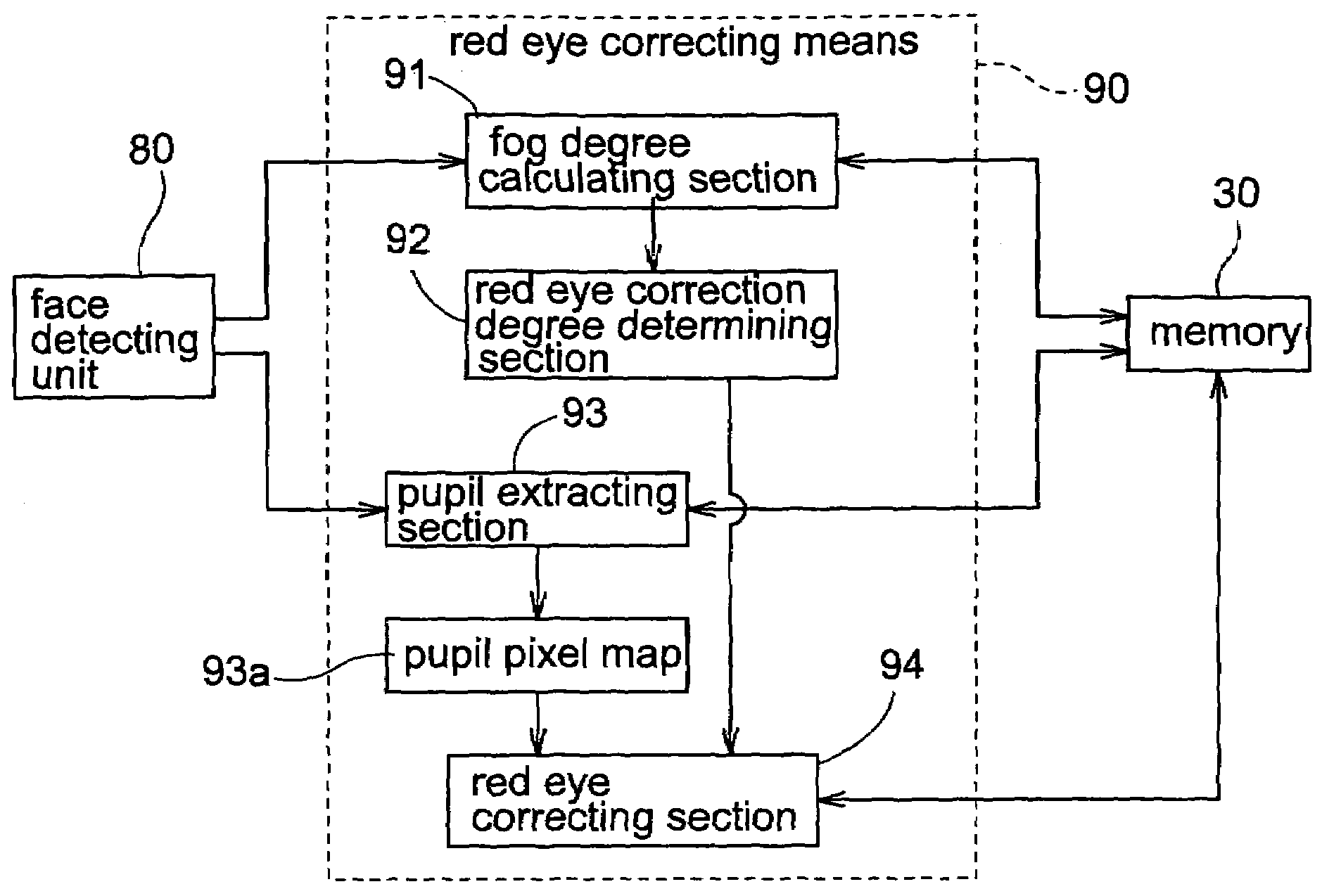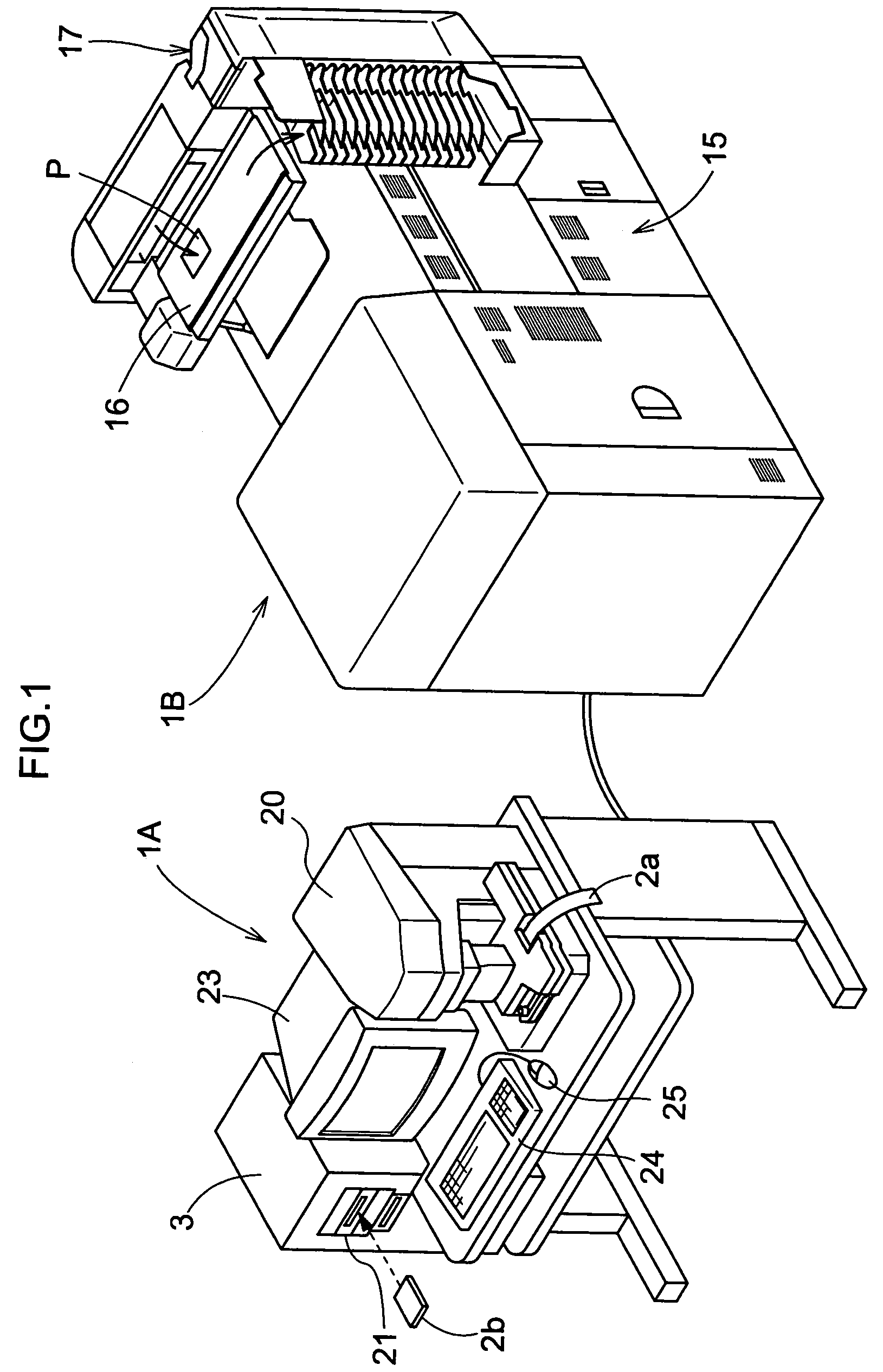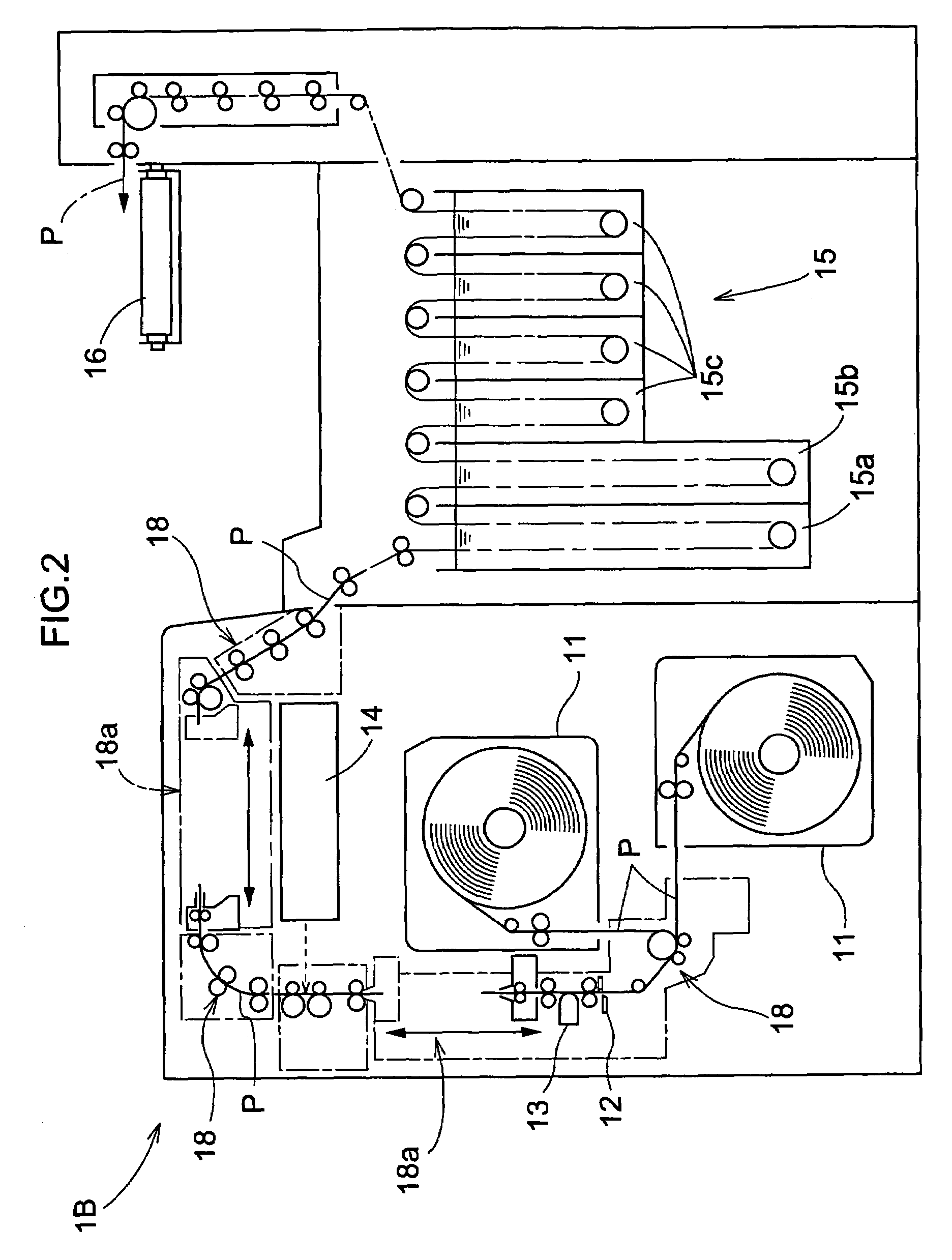Image processing method and apparatus for red eye correction
a technology of image processing and red eye correction, applied in the field of image processing technique, can solve the problems of unpopular techniques, complicated image processing techniques, and high skill of artisan, and achieve the effect of maintaining color balan
- Summary
- Abstract
- Description
- Claims
- Application Information
AI Technical Summary
Benefits of technology
Problems solved by technology
Method used
Image
Examples
Embodiment Construction
[0030]Preferred embodiments of the present invention will be described in details with reference to the accompanying drawings.
[0031]FIG. 1 shows an outer appearance of a photographic printing system employing the red eye correction technique of the present invention. As shown, this printing system consists mainly of a printing station 1B as a photographic printer for effecting exposure and development on a print paper P and an operating station 1A for processing photographic images taken from a developed photographic film 2a or various image input media such as a memory card 2b for a digital camera and effecting production / transmission of print data to be used in the printing station 1B. This photographic printing system is known also as “digital mini-labo”. As best understood from FIG. 2, in the printing station 1B, a print paper P stored in the form of a roll in either one of two print paper magazines 11 is drawn out and cut by a sheet cutter 12 to a print size strip. On this prin...
PUM
 Login to View More
Login to View More Abstract
Description
Claims
Application Information
 Login to View More
Login to View More - R&D
- Intellectual Property
- Life Sciences
- Materials
- Tech Scout
- Unparalleled Data Quality
- Higher Quality Content
- 60% Fewer Hallucinations
Browse by: Latest US Patents, China's latest patents, Technical Efficacy Thesaurus, Application Domain, Technology Topic, Popular Technical Reports.
© 2025 PatSnap. All rights reserved.Legal|Privacy policy|Modern Slavery Act Transparency Statement|Sitemap|About US| Contact US: help@patsnap.com



